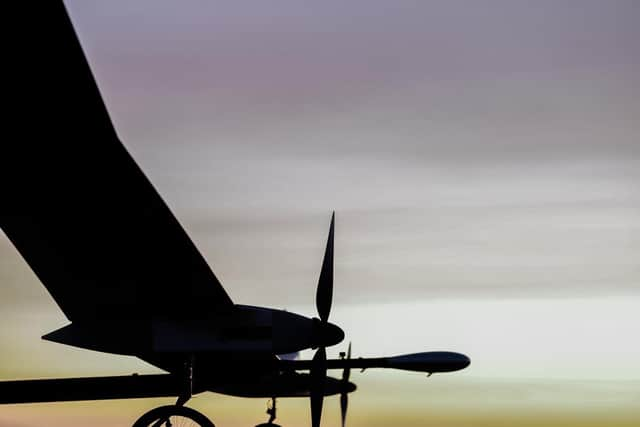BAE Systems' high flying bird set to go stratospheric this summer
and live on Freeview channel 276
The PHASA-35 being worked on by engineers at Warton and partner firm Prismatic, is due to take to the air again from the US this summer to test its range of equipment in the extreme cold of the upper atmosphere.
The carbon composite aircraft has a 35m wingspan but weighs just 150 kilos, about the same as two people, and can fly 12 miles high using solar panels on its wings as power.
Advertisement
Hide AdAdvertisement
Hide AdBAE Systems says it will be an affordable alternative to satellites, carrying cameras and other sensors as well as mobile phone network technology, but will be better because it can circle over any particular area giving unbroken monitoring, rather than just passing over for a few minutes and then leaving operators waiting for hours before an orbiting satellite passes over again.


As well as a wide range of military uses, it has commercial applications ranging from the surveillance of forest areas to detect and help control forest fires, to the provision of internet access in remote areas.
BAE Systems’ UAV manager Phil Varty said: “It can carry a 15 kilo payload such as cameras, listening devices, hyperspectral sensors. It can stay airborne for a year, this is limited by its battery type (mobile phone batteries) but technology is improving all the time.
"Flight trials in the US over the summer will demonstrate reliability of the system and its payloads in the extreme conditions up in the stratosphere and in parallel to that there is a lot of work in the background, engineering modelling, looking at potential markets.”
Advertisement
Hide AdAdvertisement
Hide AdHe said BAE Systems with its market knowledge and technology was working with a small firm Prismatic which was agile bringing the benefit of designing and building an aircraft in a few years rather than the 20 years a typical combat aircraft project can take.
He added that the companies were benefitting from each other, with techniques and technology transfers which could tie in to future projects such as BAE Systems' Tempest combat aircraft project.
The PHASA-35 should be ready for the market by the middle of the decade, to give nations and corporations an added layer of aerial coverage to work alongside satellites, aircraft and ground forces.